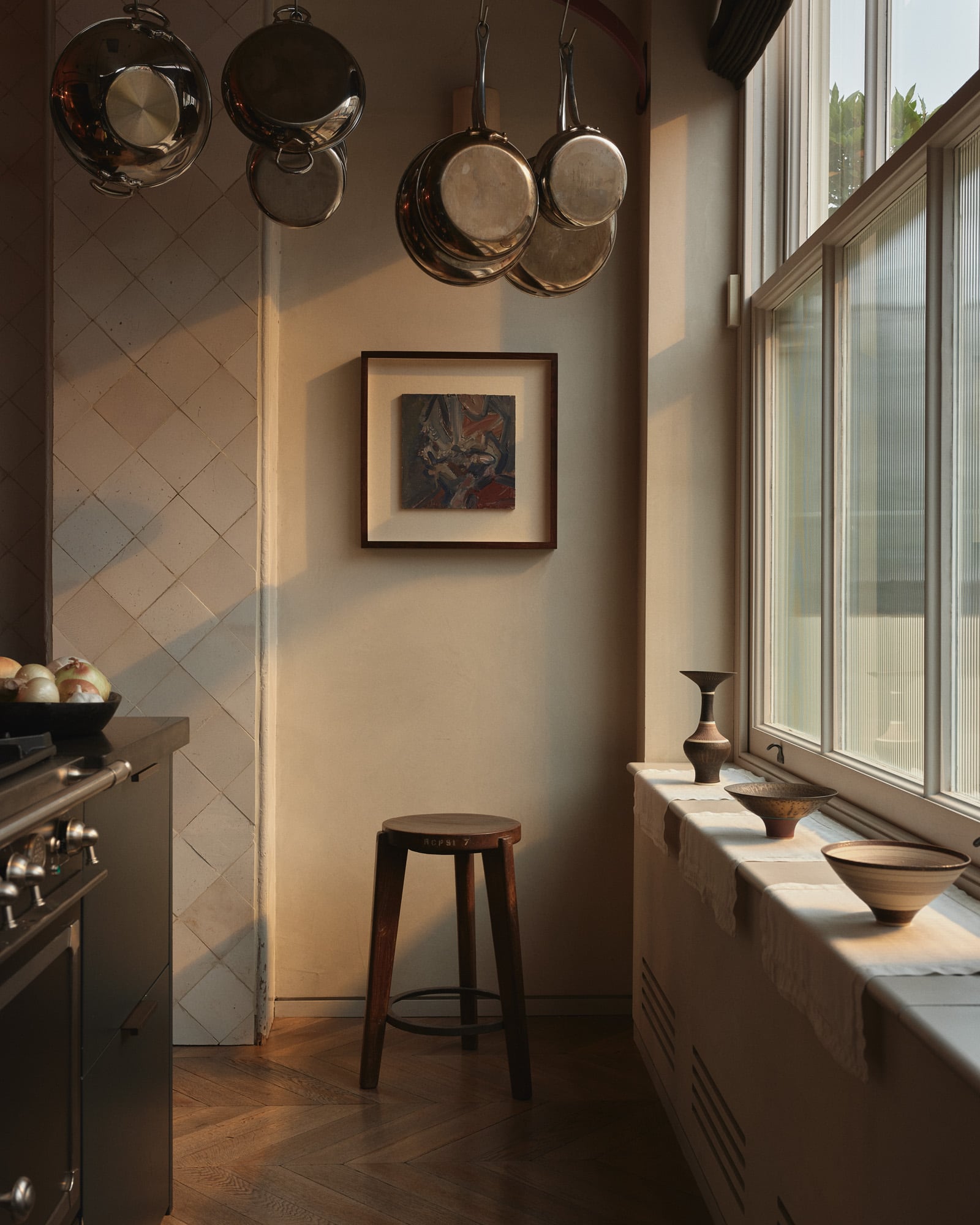Electric Kiln
Frank Auerbach
Emmanuel Cooper
Le Corbusier
Pierre Jeanneret
Lucie Rie

Following Syncretic Voices (7th October - 1st November, 2024), an exhibition of artists and designers of South Asian heritage, in which Bijlani opened his home and collection to the public for the first time, Electric Kiln seeks to develop and re-frame historic narrative threads. On this occasion, using the notion of ‘place’ as the point of departure, the exhibition delves into the history of the house itself and the surrounding landscape through the works of Frank Auerbach, Emmanuel Cooper, and Lucie Rie.
At the heart of this exhibition lies the electric kiln. Used to fire clay, it acts as a metaphor: a symbol of metamorphosis in which the raw materials of London are tested, scorched and reborn. The spirit of alchemical transformation echoes across the practices of all three artists, who - having gravitated toward London early in their careers - harnessed traditional means, and, charged with the electrical atmosphere of their time, directly responded to their surrounding urban environment. In Electric Kiln , paintings, charcoals, and ceramics are juxtaposed with modernist design by Pierre Jeanneret and Le Corbusier in a private, residential setting, creating an immersive yet intimate atmosphere in which to experience the works.
Spread across three floors, the exhibition opens on the ground level with monochromatic ceramics by Cooper and Rie, volcanic glazes and sgraffito surfaces are set upon a metal topped Jeanneret table, paired with a selection of Auerbach’s charcoals. On the first floor, which looks out onto Primrose Hill, visitors encounter Auerbach’s paintings of that very landscape, paired with tonal ceramics by Rie and Cooper, whose molten glazes reflect the texture and movement of Auerbach’s impasto. The lower ground floor presents a series of Auerbach heads, their dense surfaces and sombre hues capture a raw psychological force. A shift in curatorial tone, these works are punctuated by limited yet vivid colour, similarly reflected by the ceramics which surround them.
Set against a backdrop of never-before-seen designs from Chandigarh by Le Corbusier and Pierre Jeanneret, including a Minister’s Desk from the High Court, thought to be the only one of its kind, and a Rope Chair from the architects’ private residences, both cornerstones of Bijlani’s collection, Electric Kiln places urban materiality in direct dialogue with the personal histories and radical experimentation of three artists, each deeply tied to not only London but the surrounding landscape of Fonthill Pottery.
Auerbach’s signature impasto technique lends itself to the topography of his contemporary climate: accumulations of thick paint attack the canvas, recalling not only the idiosyncrasies of the hand that made them, but the chaos of the rapidly growing urban landscape. Cooper’s glazes crackle with an urban sensuality, their volcanic surfaces and vivid colour palettes paying homage to the textures and tones of London: asphalt, concrete, and the sparkling lights of the city skyline. Rie similarly advocated for the urban potting approach, likewise utilising the electric kiln within her practice. Paying homage to her inspirations, in Electric Kiln , Rie’s mixed clay bottles with flaring necks, sgraffito bowls, and vases with pitted surfaces engage with London’s textures, forms, and energy whilst aligning with the tenets of modernism. The intersection of material sensitivity, urban influence, and conceptual identity also resonates with current trends in ceramics, with artists increasingly exploring the relationship between place, process, and identity.
Deriving its name from the tool so pivotal in both Rie and Cooper’s practices, Electric Kiln becomes an extended metaphor for the vivacity of London. It speaks to the dynamic nature of urban existence, modern thinking, and evolving techniques, echoing the continuous transformation of both the city and the lasting impact it had on the practices of these three seminal artists. The exhibition seeks to link seemingly disparate narrative threads and construct a dialogue between three individuals who are not only united by place, but a prioritisation of form and a lifelong pursuit of beauty.
